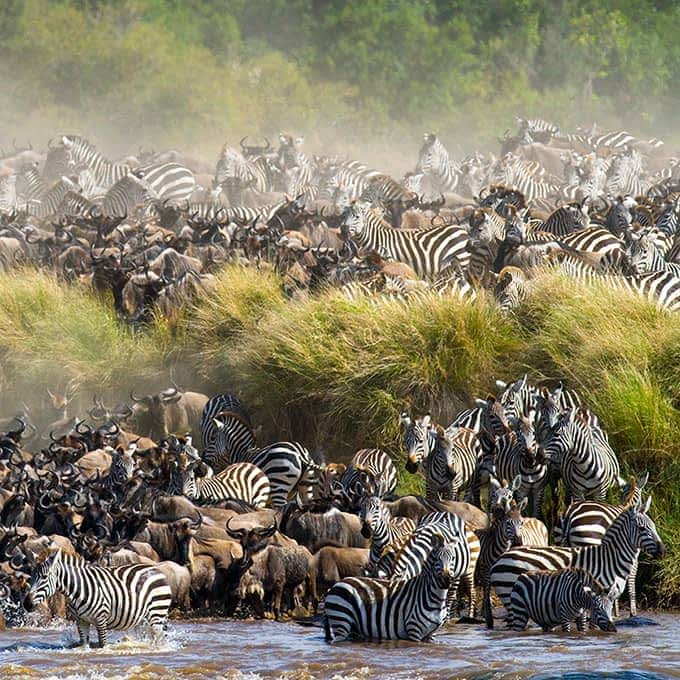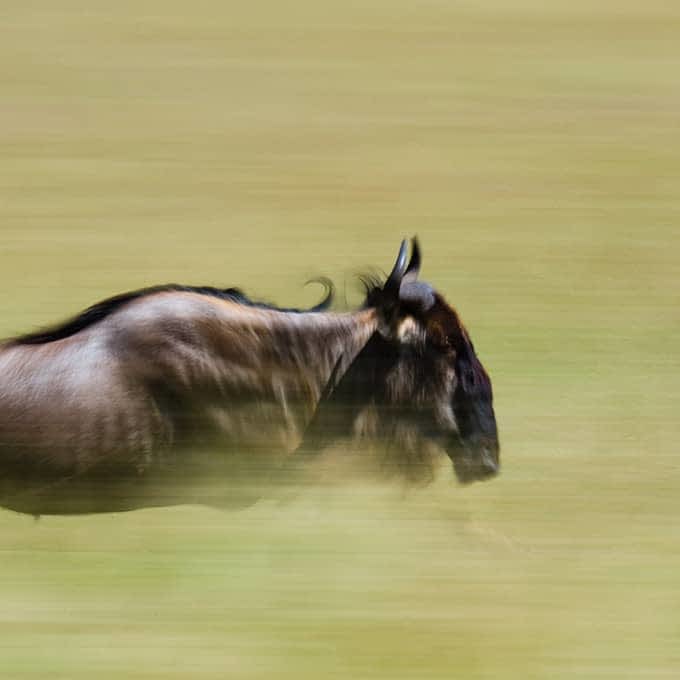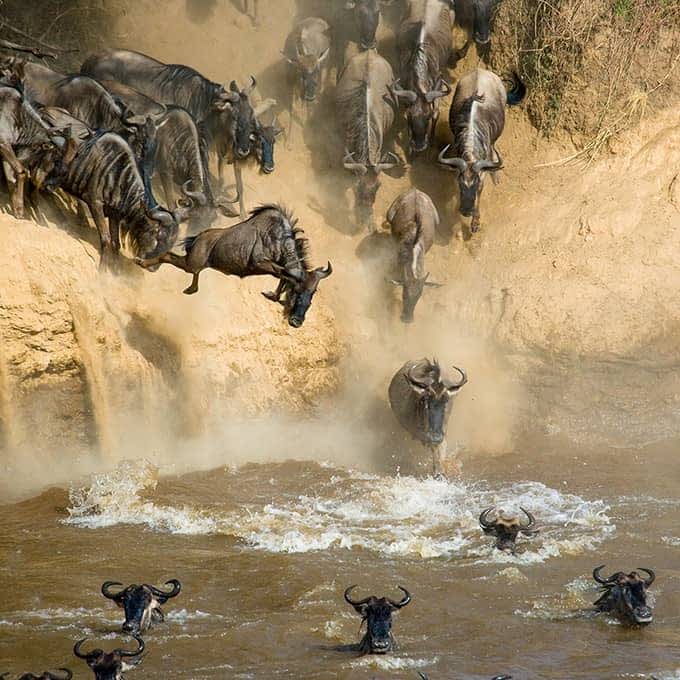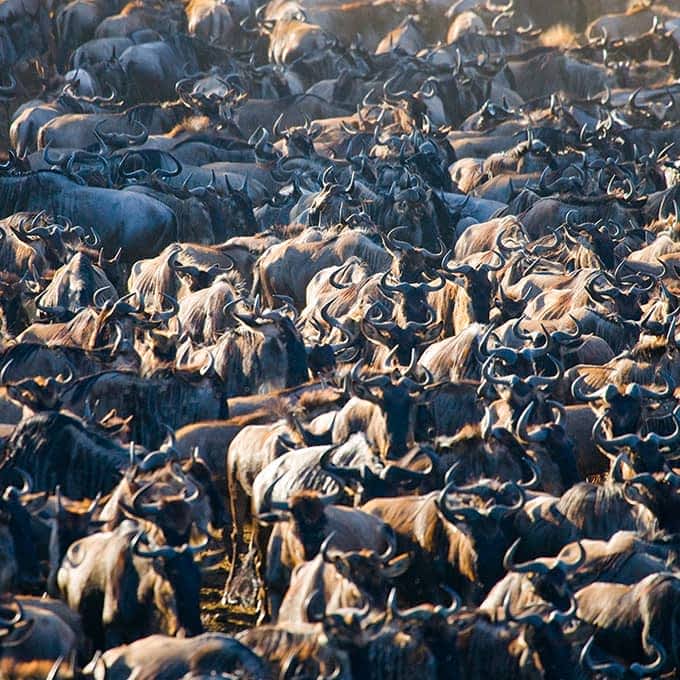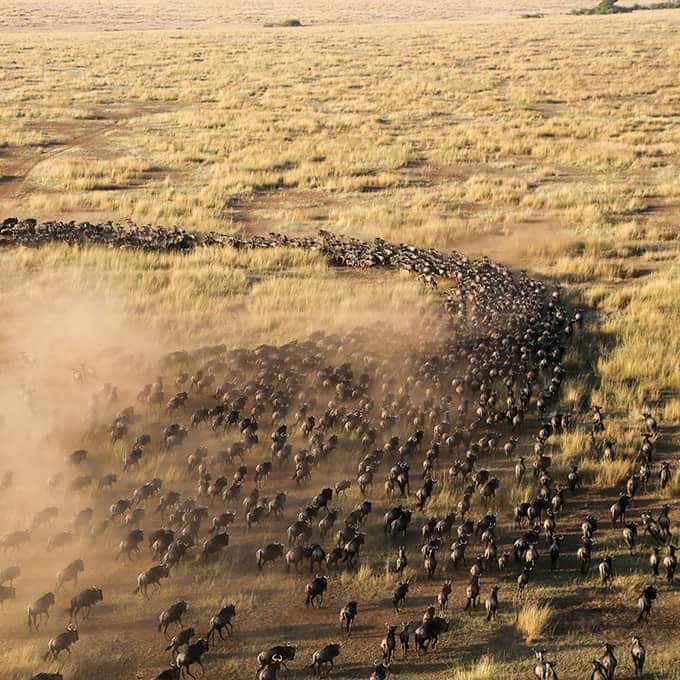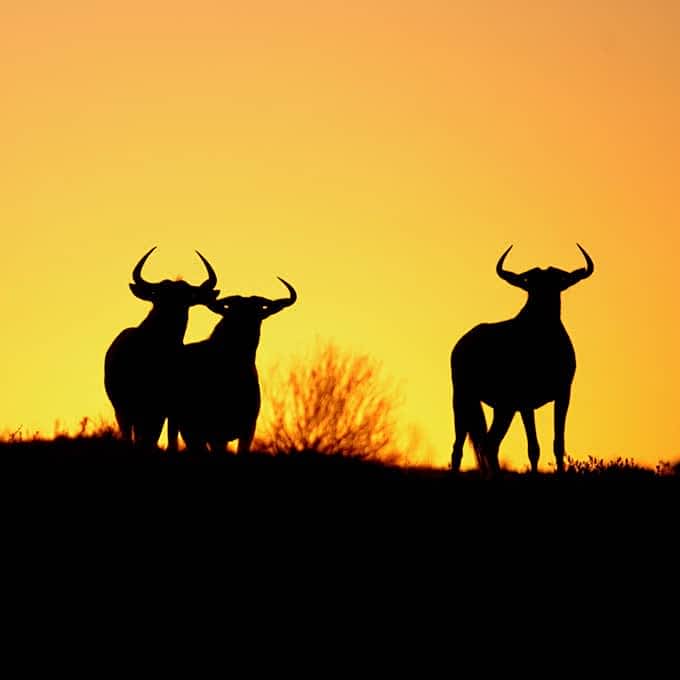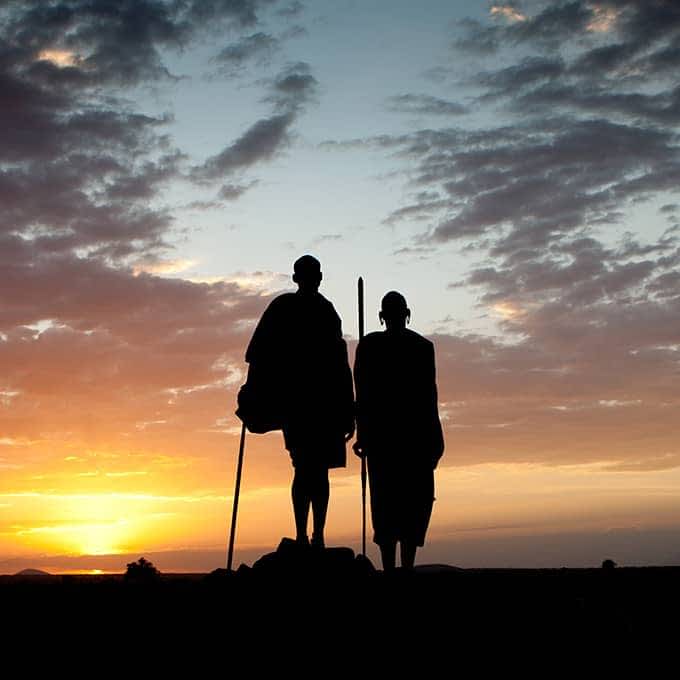The Great Migration in a nutshell
With 1,5 million wildebeest, 400,000 zebra, 12,000 eland and 300,000 Grant’s and Thomson’s gazelles trekking from southern Serengeti to the Masai Mara, the 'great' in 'Great Migration' may be a bit of an understatement. The constant year-long migration is an iconic natural phenomenon, the timing of which depends on environmental factors, the weather and of course, the animals themselves. In short, the biggest mammal trek in the world follows the rains. The herds travel 800 kilometers clockwise in a circle through the Serengeti and Masai Mara ecosystems in search of greener, mineral rich pastures and water. The animals spend most of the cycle in the Serengeti in Tanzania, but also spend several months trekking the bountiful plains of the Masai Mara.
Highlights of the Great Migration
As the herds of wildebeest, zebras and gazelles enter the Masai Mara they are met by more than their fair share of lethal predators. Aside from the threat of the big cats, the lemming-like herds are also faced with over 3000 crocodiles lurking in the murky waters of the Mara River during their river crossing. Watching the herds blindly jump from riverbank ledges and into the river waters is spectacular to say the least. Eventually the massive herds are rewarded with spoils of the wide open Masai Mara plains. For a short while, life is good. When the food supply dwindles and the rains move on, so do the herds.
Showtime... when to expect the herds?
In general, the best time to see the Great Migration in the Masai Mara is from July to October. Keep in mind though, mother nature is her own boss. We will provide you with a very probable outline of when to expect those special moments during the Great Migration, but obviously there is no way to know for certain that the herds will cross a river during a particular period of time. Weather can be unpredictable and late rains or early rains can result in a delayed or early migration pattern. The good news is that the Masai Mara has plenty of wildlife to enjoy all year round. The months that are most frequently mentioned as the best time of year to visit the Great Migration, July to October, are also the busiest months in the Masai Mara. It is safe to say that you won’t have the herds to yourself during these months. You can expect more safari travelers within the Masai Mara National Reserve proper and may have to queue up during safari game drives. For a quieter stay in this period we recommend staying in one of the Masai Mara conservancies. Here is an outline of what to expect from the Great Migration.
July
From late July and into the month of August, the herds leave the arid plains of the Serengeti in search of food and water. This is the best time to watch the dramatic Mara River crossings.
August
Most of the wildebeest and their migration companions will have reached the Mara by August. They’re greeted by a very eager hunting party of big cats.
September
Life is good in the Mara in September. The herds enjoy relative peace and quiet on the plains. This is the perfect time of year for epic safari game drives across in the Masai Mara National Reserve.
October
Come October, the rains begin to fall and by November the herds start heading back to the Serengeti. And so, the never-ending cycle of the great migration continues on and on...
Further reading

